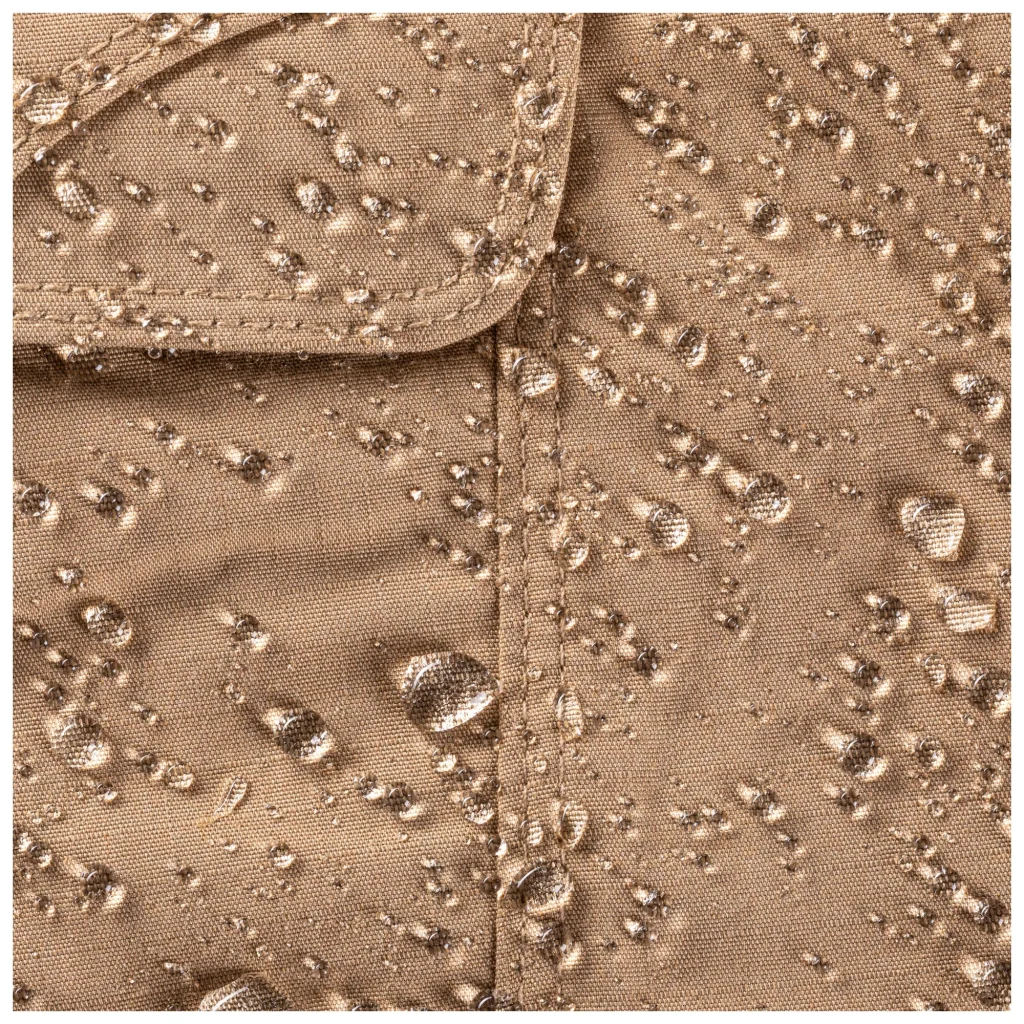Functional Finishing in Modern Workwear
Modern workwear is evolving beyond durability and comfort. Increasingly, garments are expected to protect against water, oil, and stains—without sacrificing breathability or softness. This is where WR (Water Repellent), OR (Oil Repellent), and SR (Stain Release) finishes play a vital role.
What Is WR/OR/SR Fabric?
WR/OR/SR fabrics are textile materials treated through post-dyeing finishing processes to make them water-repellent, oil-repellent, and stain-resistant. These treatments can be applied to various base fabrics such as 100% cotton, poly-cotton, stretch cotton, and nylon/cotton blends, using agents like Teflon™ or fluorine-free alternatives.
These finishes are invisible and don’t affect the appearance, touch, or breathability of the fabric. Yet they significantly improve usability in industrial and outdoor conditions.
What Does WR/OR/SR Mean in Fabric Finishing?
- WR (Water Repellent): Prevents water from penetrating the fabric surface. Water forms beads and rolls off.
- OR (Oil Repellent): Blocks oil and grease from absorbing into the fibers.
- SR (Stain Release): Enables stains to be easily washed away in regular laundering.
These effects are achieved by lowering the surface tension of the fabric through chemical finishing.
What Fabrics Can Be Made WR/OR/SR?
WR/OR/SR finishing is not limited by fabric type. The most common base materials include:
- 100% cotton (for breathability)
- Polyester/cotton blends (for balance between durability and comfort)
- Cotton/spandex (stretch applications)
- Nylon/cotton blends (for tactical or outdoor workwear)
As long as the fabric can withstand the curing temperature, it can be treated.
What’s the Difference Between Teflon and Fluorine-Free Water Repellents?
Teflon™ finishes, made with fluoropolymer chemistry, provide strong repellency but face scrutiny over environmental concerns. In response, fluorine-free technologies are emerging.
| Criteria | Teflon™ Finishes | Fluorine-Free Finishes |
|---|---|---|
| Water repellency | Excellent | Good to very good |
| Oil repellency | Strong | Weak to moderate |
| Environmental impact | Higher (PFCs involved) | Lower, eco-friendlier |
| Regulatory approval | Under pressure (EU/USA) | Preferred for green markets |
Some manufacturers now offer both types, depending on client demand and target regions.
How Durable Is Water Repellent Treatment on Workwear Fabric?
Performance isn’t just about initial repellency. Durability is tested via standards such as AATCC22-2001 (water spray), AATCC118-2002 (oil repellency), and AATCC130-2000 (stain release).
Some WR/OR/SR-treated fabrics can retain high-level performance (e.g., water repellency grade 100) even after 20 home washes. This makes them ideal for demanding work environments
What Applications Need WR/OR/SR Treated Fabrics?
These fabrics are essential in:
- Industrial workwear (oil rigs, factories)
- Food service uniforms (grease-prone zones)
- Outdoor clothing (rain, mud exposure)
- Tactical or military garments
- Medical and laboratory coats
They help reduce cleaning cycles, prolong garment life, and maintain a clean appearance in harsh conditions.
Can WR/OR/SR Finishing Be Customized Based on Fabric Type?
Yes. Depending on the fabric’s composition, stretch, dyeing process, and end-use, different finishing agents and methods are selected. Some textile mills—especially those experienced in functional finishing—can tailor:
- Fluorine or fluorine-free agents
- Soft-hand or stiff-hand finishes
- Durability levels (5, 10, or 20+ washes)
Inquiries from brands or workwear buyers looking for reliable WR/OR/SR fabric development can reach out via sales@ripstopfabric.com. There are mills capable of offering consistent quality with test-verified durability.
Summary
WR/OR/SR finishing enhances fabric performance in critical ways, especially for industrial workwear. By understanding how repellency works and what finishing options exist, buyers can make informed choices—ensuring both functionality and durability in the garments they source.

